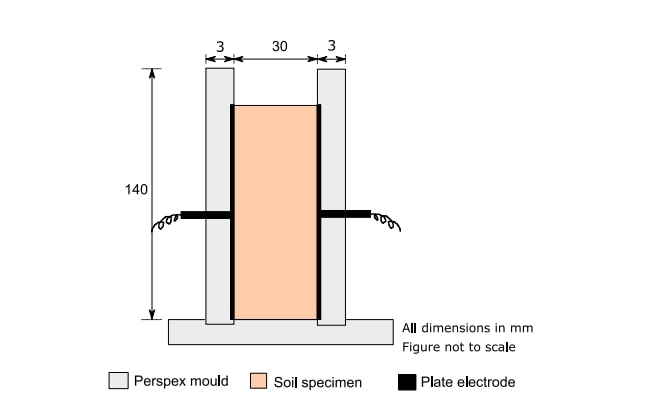The invention presents a novel system and method to generate the Soil Freezing Characteristic Curve (SFCC) by measuring the effective dielectric permittivity of soil as it undergoes freezing. The system involves an impedance cell with parallel plate electrodes, an impedance analyzer, and a freezer unit. It calculates the volumetric fractions of ice, unfrozen water, air, and solids across temperature variations. The method is non-destructive, suitable for in-situ and laboratory applications, and improves upon the limitations of existing complex or invasive techniques.
Conventional techniques to determine soil freezing behavior—like NMR, calorimetry, or resistivity methods—are either invasive, expensive, destructive, or unsuitable for field use. Moreover, they often require multiple calibrations and fail with certain soil types (e.g., containing ferromagnetic materials). There is a pressing need for a non-destructive, accurate, and field-adaptable method to assess volumetric ice and water content in frozen soils, which is crucial for designing stable infrastructure in cold regions.
- Advanced Dielectric Mixing Model Integration: The method applies a four-phase mixing model to convert dielectric readings into volumetric fractions of ice, water, air, and solids, enabling precise SFCC generation even at sub-zero temperatures.
- Compact and Portable Apparatus: The impedance cell is small (140×110×30 mm), lightweight, and made of Perspex, making it suitable for both field and lab applications with minimal disturbance to the soil structure.
- Real-Time, Multi-Stage Monitoring: The impedance analyzer captures permittivity at multiple freezing stages, allowing for continuous monitoring of the freezing process and thermal equilibrium.
- No Temperature-Wide Calibration Required: Once the single-point model parameter (β) is determined, it remains valid across temperature ranges, reducing operational effort and enhancing efficiency.
- Improved Accuracy over Prior Art: Unlike prior sensors (e.g., EC-based frost meters), this system avoids measurement noise, thermal distortion, and inaccuracies from moisture absorption or probe insertion.
A working laboratory prototype has been fabricated and validated using fine sand specimens with varying moisture levels. It consists of a Perspex impedance cell, stainless steel electrodes, a coaxial cable interface, and an impedance analyzer. Freezer units are used to simulate sub-zero conditions.
A fully functional laboratory prototype has been developed and tested using fine sand samples with varying moisture content. The system has generated reproducible SFCCs using impedance measurements under freezing conditions.
3
By enabling accurate measurement of frozen soil behavior, this invention can dramatically improve engineering decisions in regions affected by frost or permafrost, such as the Himalayas or Arctic zones. The method enhances road and building foundation design by providing precise freezing characteristics, which reduces failure risk and maintenance costs. Additionally, its non-destructive and low-cost nature promotes wider accessibility for researchers, engineers, and governmental agencies. This supports climate-resilient infrastructure, disaster prevention, and contributes to sustainability and safety in cold-region development.
- Region Infrastructure
- Cold Civil and Geotechnical Engineering
- Climate Resilience Projects
- Soil Testing and Environmental Research
- Hydrology and Freeze–Thaw Modelling
- Polar and Permafrost Research Institutes
Geography of IP
Type of IP
202121003388
543601

